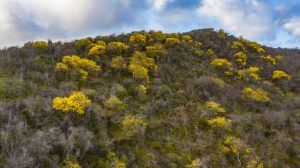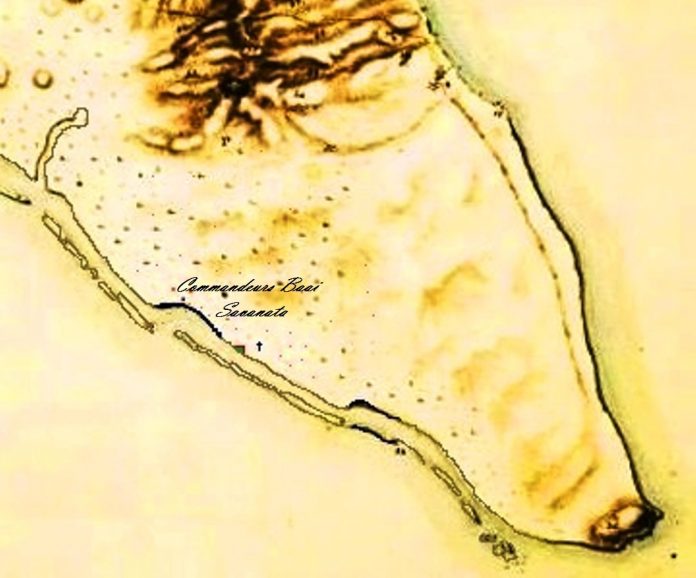(Oranjestad)—Before Oranjestad became the island nation’s capital, Aruba’s first capital was the district of Savaneta. Here is where the cultural identity of Aruba was born, and from where the rest of the island developed into what it is today.
Savaneta is said to have been the first place where the Caquetio inhabitants first stepped foot on the island. Though there isn’t hard evidence to back this up, but considering the legend of the Cacique Arua, it is believed that there were already movements on Aruba—and Savaneta—around 88 AD.
The Caquetios probably made their way to the island either from Venezuela, Colombia or other Caribbean islands in the region, but with good weather it was relatively easy for them to travel back and forth in their canoes. So, since the Caquetios discovered the island, Aruba found her first form of civilization.
It wasn’t until 1499 when Aruba met another group of people who set foot on the island: the Spanish explorer Alonso de Ojeda. De Ojeda first took notice of Aruba off the coast of Venezuela, during his exploration of the Latin American country. This was on August 9th, 1499. However, de Ojeda didn’t actually sail to the island till 4 days later, on August 23rd, 1499. This was the beginning of the Spanish era on Aruba (1499-1636).
Alonso usually didn’t stop at every island or land he saw, especially not in the Caribbean. He wou ld often take notice of land from afar and continue sailing. However, Aruba was an exception. He had heard that there were “quebracho” trees on the island, which were commonly used to produce dye or paint. But since these trees could not be found in Savaneta, he continued to search in the area of what is now known as Santa Cruz. The best way to transport the tree barks was via a route passing through Savaneta, and so the first road between Savaneta and Santa Cruz was made.
ld often take notice of land from afar and continue sailing. However, Aruba was an exception. He had heard that there were “quebracho” trees on the island, which were commonly used to produce dye or paint. But since these trees could not be found in Savaneta, he continued to search in the area of what is now known as Santa Cruz. The best way to transport the tree barks was via a route passing through Savaneta, and so the first road between Savaneta and Santa Cruz was made.
The Dutch colonial era (1636-1805)
During the 80-year war between The Netherlands and Spain, Dutch explorers and merchants began to travel to the ABC islands. Once they landed in Aruba, they deported the small Arawakan and Spanish community that was living on the island. This was the beginning of colonization of the ABC islands by the Dutch empire. Around the same, the West Indian Company (WIC) was born. Bonaire and Curacao were mostly used for plantations, where the Dutch had transported slaves from Africa. Aruba, on the other hand, was mostly used to raise cattle and to house the haring factory. The Dutch had often forced the indigenous community to work for them.
In 1636, when the Netherlands won the war against Spain, the country surrendered the islands to the Dutch.
The Dutch administration appointed the island’s first commander, an Irish man named N. Williams. Because the Dutch were interested in other Caribbean islands and countries in South America, they imported Dutch merchants and business men, all of whom resided in Savaneta. This way, Savaneta officially became the island’s first capital.
However, at the end of the 18th century, the commander at the time, J.R. Lauffer, moved his office to what is now “Horse Bay” in Oranjestad. Because the highest office on the island moved away from Savaneta, the capital lost its title to what was called then Playa.
How Savaneta got its name
The name Savaneta probably has a Spanish origin. It was said that when the Spanish climbed a hill called Yara, they saw that the area was mostly open and had no big trees. In Spanish, such a land area is called a “sabana”.
Because of its land surface, Savaneta was a great place to construct cattle farms. From here, the farmer culture on Aruba was born. Before the Aruban Gold Rush and the construction of the Refinery in San Nicolas, most residents were farmers, and Savaneta had many inhabitants that farmed fruits and vegetables. They also continued the tradition of raising cattle, like goat, sheep, pigs and horses. Savaneta was one of the first places on the island to have a general farming culture. From this culture, many other traditions were born, like the Dera Gay Holiday that we celebrate every year on June 24th.
Source: Historia di Savaneta (History of Savaneta) by Adolf “Dufi” Kock.




















